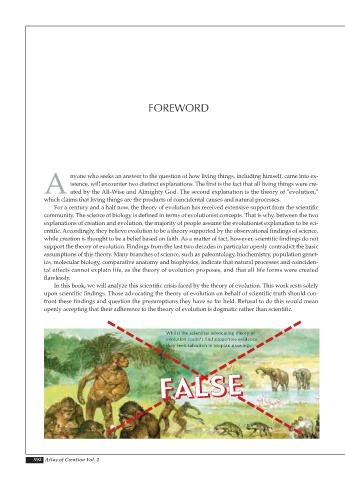Page 594 - Atlas of Creation Volume 2
P. 594
FOREWORD
nyone who seeks an answer to the question of how living things, including himself, came into ex-
istence, will encounter two distinct explanations. The first is the fact that all living things were cre-
A ated by the All-Wise and Almighty God. The second explanation is the theory of "evolution,"
which claims that living things are the products of coincidental causes and natural processes.
For a century and a half now, the theory of evolution has received extensive support from the scientific
community. The science of biology is defined in terms of evolutionist concepts. That is why, between the two
explanations of creation and evolution, the majority of people assume the evolutionist explanation to be sci-
entific. Accordingly, they believe evolution to be a theory supported by the observational findings of science,
while creation is thought to be a belief based on faith. As a matter of fact, however, scientific findings do not
support the theory of evolution. Findings from the last two decades in particular openly contradict the basic
assumptions of this theory. Many branches of science, such as paleontology, biochemistry, population genet-
ics, molecular biology, comparative anatomy and biophysics, indicate that natural processes and coinciden-
tal effects cannot explain life, as the theory of evolution proposes, and that all life forms were created
flawlessly.
In this book, we will analyze this scientific crisis faced by the theory of evolution. This work rests solely
upon scientific findings. Those advocating the theory of evolution on behalf of scientific truth should con-
front these findings and question the presumptions they have so far held. Refusal to do this would mean
openly accepting that their adherence to the theory of evolution is dogmatic rather than scientific.
Whilst the scientists advocating theory of
evolution couln't find supportive evidence,
they seek salvation in utopian drawings.
F FALSE
ALSE
592 Atlas of Creation Vol. 2

